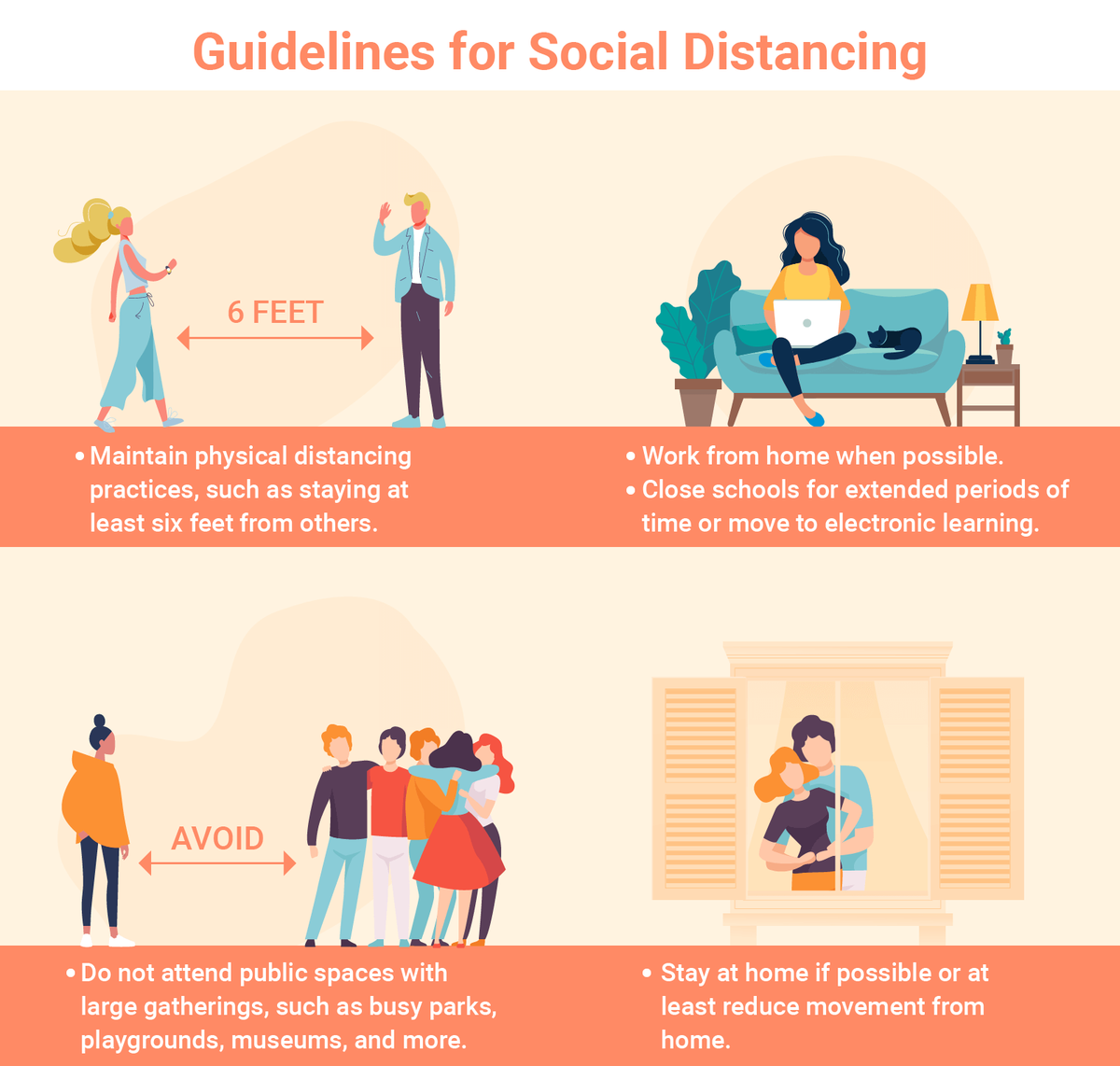
Whether you’re trying to get a sense of current guidelines or reading a history book, it helps to understand quarantine vs. isolation. How are these terms different? How do they compare to social distancing? Learning the differences and similarities will help.
Understanding the Terms
Before you can understand how these terms are related, it’s essential to understand their meaning.
What Is Quarantine?
Quarantine can be either a noun or a verb. Both can apply to humans or animals, and both usually involve the spread of disease.
- As a noun, a quarantine is a period or place of imposed isolation to prevent the spread of an illness. For example, "New arrivals will be placed under quarantine."
- As a verb, to quarantine is to impose a period of isolation on an individual or group of individuals to prevent spread of a contagious illness. For example, "The government will quarantine new arrivals."
What Is Isolation?
Isolation is a noun. It means being isolated, by choice or otherwise. In isolation, someone or something is left on its own with no or minimal contact with others.
For example, "The isolation is taking its toll on my mental health."
What Is Social Distancing?
Social distancing is also a noun. It refers to the practice of maintaining physical distance from others in a society to slow the spread of a contagious illness. This can involve keeping a physical space, such as six feet, between members of a community. Sometimes, this means closing public spaces, social institutions, and schools. It can also involve choosing to stay at home.
For example, "Experts recommend social distancing to slow the number of new cases."
How These Terms Are Related
All three terms refer to efforts to reduce the spread of infectious diseases like influenza, coronavirus, measles, and others. Both quarantine and social distancing are related to the concept of isolation. Here’s how:
- When a quarantine is imposed, the people or animals involved must be isolated from other members of the community.
- Part of the process of social distancing involves isolation. Many individuals choose to isolate at home to avoid spreading or contracting a contagious illness.
Key Differences: Quarantine vs. Isolation vs. Social Distancing
In reading about an epidemic or pandemic, you may hear these terms used in different ways. Being familiar with their specific differences is important in understanding what is happening or has happened in the past.
Role of Choice
One of the biggest differences in these terms is the role of choice. Does the person or animal have input?
- Quarantine - There is no choice in quarantine. Unless it is specifically called “self-quarantine,” the separation from the community is imposed by others.
- Isolation - Isolation can be a choice, or it can be imposed by others. If it is imposed by others, it may be a quarantine. If it is a choice, it may be part of social distancing.
- Social distancing - This can be a choice, or it can be a result of policies imposed by leaders.
Where Is the Threat of Infection?
Another key difference in these terms is the location of the threat. Who might be infected?
- Quarantine - The person or animal being quarantined is usually the one who might carry the infection.
- Isolation - An individual may choose to isolate to reduce the risk of catching a disease that is already in the community, or he or she may have a disease and choose to isolate to prevent spreading it.
- Social distancing - Some members of a community are infected, while some are not. Social distancing may be practiced by both groups.
Who Is Being Protected?
The individual or group being protected can also vary, depending on which term you are using.
- Quarantine - The greater community is protected when one contagious member is kept separate in quarantine.
- Isolation - In general, the individual in isolation is protected from contagion in the greater community.
- Social distancing - The greater community is protected by slowing the spread of illness.
How Many People Are Affected?
The number of people directly affected also varies, depending on whether you are talking about quarantine, isolation, or social distancing.
- Quarantine - This applies to a limited number of people or animals (only those who may be infected).
- Isolation - This also applies to a limited number of people or animals (only those who are choosing to or compelled to be separated from the community).
- Social distancing - This applies to entire communities.
Quick Reference Guide
If you need to see the differences between quarantine vs. isolation vs. social distancing at a glance, this quick reference guide can help.
Quarantine | Isolation | Social Distancing | |
Who is protected? | Greater community | Individual | Greater community |
Who is affected? | Individual(s) | Individual(s) | Greater community |
Who may be contagious? | Individual(s) | Greater community | Greater community |
Is it by choice? | No, unless self-imposed | Usually | Usually, but sometimes imposed |
To help you and your community remember the guidelines for social distancing click on the image below to download and share this infographic:

Better Understanding of This Social Issue
The spread of illness is an important social issue that affects everyone in the world. Understanding the terminology around it can help you write more effectively and better understand what you read.